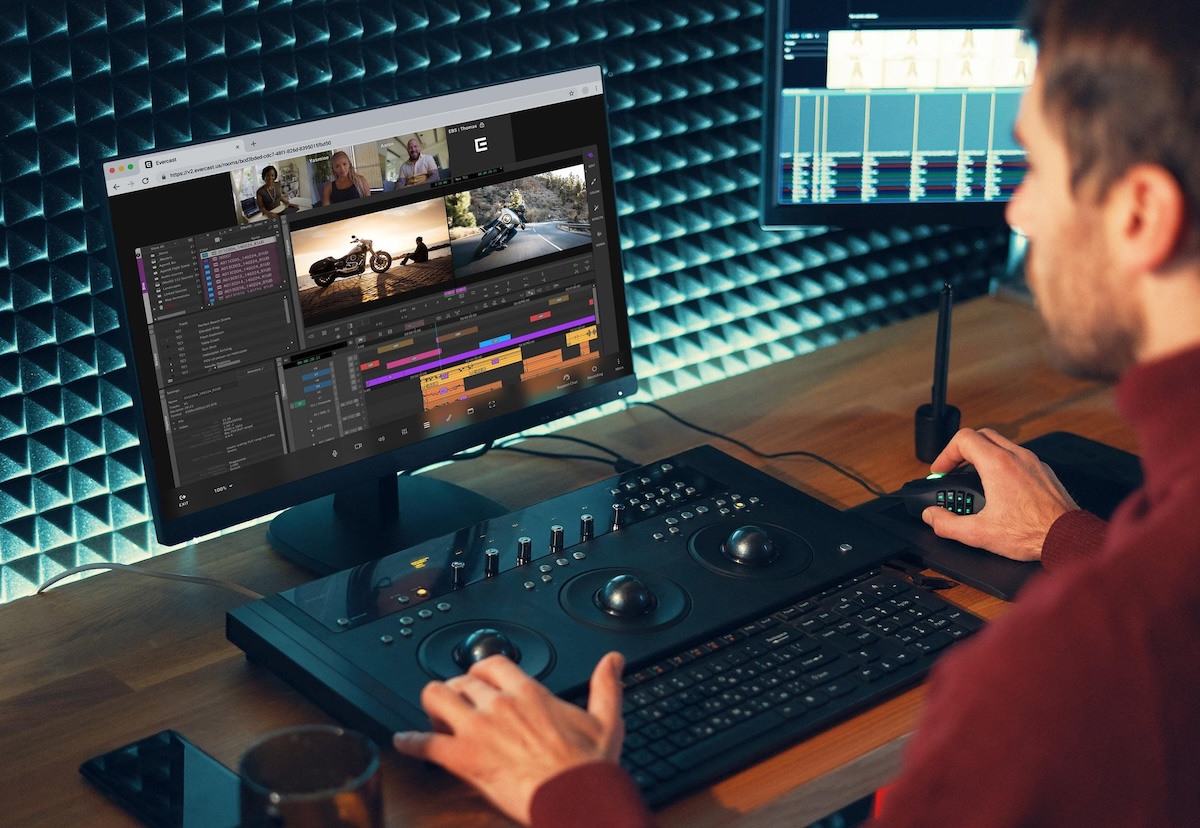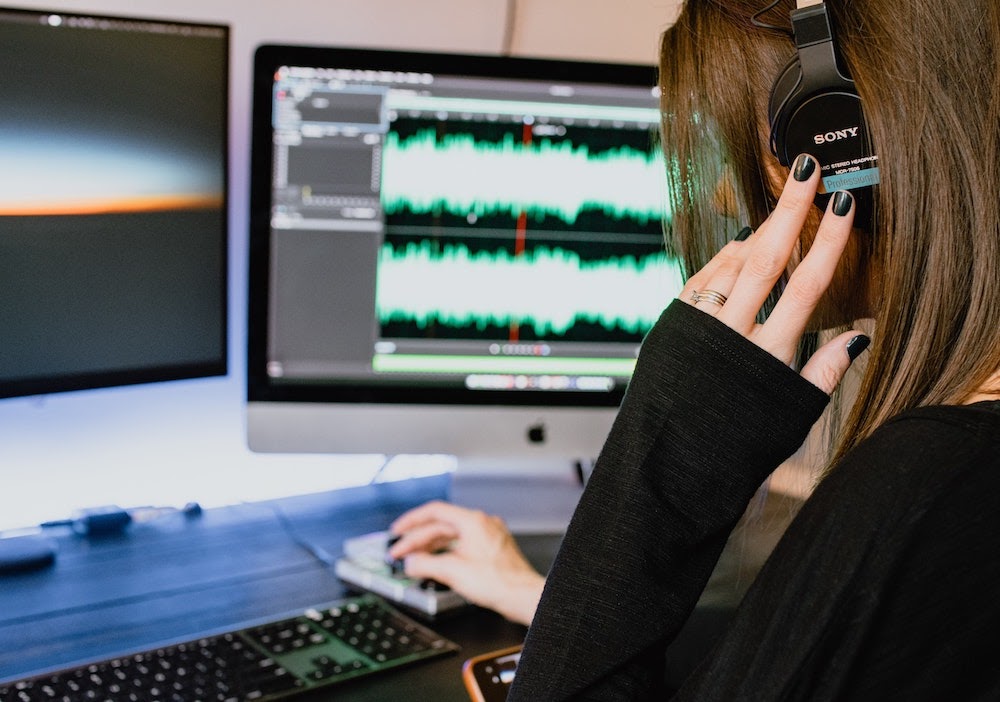Music production has always and will always be a collaborative art form.
However, trying to collaborate with your creative team members remotely in an age of closed recording studios and social distancing can be a huge headache.
Working on a project together now means that you’re sending draft after draft back and forth while trying to keep track of everyone’s notes and chasing people for feedback.
It’s no wonder that so many producers are looking for a way to recreate the feeling of a live recording and mixing session just like the studio, even when the team isn’t physically together.
The most obvious solution to this is to try to stream your Ableton Live session directly over our pandemic-era video meeting platform of choice: Zoom. However, there is no straight path to streaming a program like this over Zoom. How can you do it?
Your goal: stream your Ableton Live workspace in real-time while collaborating with your creative team. Do these common workarounds meet the needs of modern editing teams?
The problem with streaming Ableton Live over Zoom
Ableton Live demands a significant amount of CPU power, which becomes an immediate problem when streaming over Zoom. Zoom just isn’t designed to stream DAWs, and Zoom itself demands a significant amount of processing power as well. The focus of Zoom’s design is for basic conversations or screen-sharing web pages and documents.
When Zoom has to compete for resources against other CPU and graphics-heavy programs like Ableton Live, it will attempt to balance the load by downgrading the quality of the stream on one or both ends. This not only can result in a loss of stream quality, but can also lead to other issues like video lag and application crashes.
All this aside, the benefit of Zoom is that it is a universally accepted video meeting software. Nearly everyone already has it installed on their computer and knows how to operate it.
Because of that, it’s worthwhile to see if there are any workarounds that will allow you to stream your Ableton Live session over Zoom.
A Few Common Ways to Stream Ableton Live
Use Evercast
Evercast is purpose-built to make streaming professional DAWs like Ableton Live a cinch. The platform requires a simple one-time setup and requires no additional software to enjoy a seamless, real-time collaboration session.
Evercast allows you to stream your DAW session in full HD with ultra-low latency (less than 150ms on average). This low latency is as close to natural conversation and editing as you can get.

In addition to chatting in real-time, on-screen annotation and timestamped notes allow each participant to add their input while keeping everything organized and preventing you from having to hunt for that one imperfection someone picked out:
- Full HD with <150 millisecond delay (literally faster than the blink of an eye).
- Your team can video and audio chat at the same time they are watching, allowing for instant feedback.
- Ability to draw on screen for more detail.
- No special hardware needed, no “hacks” necessary.
- 24/7 white-glove support.
- Dedicated apps for macOS, Windows, iPhone, iPad, Apple TV, and Apple Vision Pro.
- Supports up to 10-bit 4:4:4 color.
- 5.1 and 7.1 surround sound support.
- 4K/60fps streaming of any editing workflow via Premiere Pro, any other NLE or creative software, media files, and more.
- Encrypted video streams and two-factor authentication required to join secure rooms.
- Approved by ALL major studios and OTT content providers.
And for your less tech-savvy participants, they’ll be relieved to know that they don’t have to download any additional software to participate in an Evercast collaboration session. All they have to do is follow the link you provide and they can join from any device, anywhere in the world.
If you’re looking for a better way to bring your creative team closer together and collaborate more efficiently from a distance, check out Evercast. Remote editing doesn’t have to be difficult. You deserve software that works for you, not against you.
Create together remotely, in real time

If you're not ready for a solution like Evercast, here are some workarounds to stream Ableton over Zoom.
Two CPUs, an NDI, and OBS
This solution requires:
- Two separate screens
- Two separate CPUs (for best performance)
- A broadcasting program like OBS (Open Broadcasting Software)
- An NDI (Network Device Interface)
This workaround will require you to download an NDI to the system running Ableton Live and download OBS to the system you’ll run Zoom on. Once these programs are in place, open Ableton Live and your NDI and use the NDI to broadcast a feed of your screen.
On the other system, open OBS, locate the NDI stream and set it as your video source. You should now see a live broadcast of your Ableton Live workspace.
The last step is to open Zoom and set your camera as the feed from OBS. This will allow you to broadcast your workspace to meeting participants over Zoom as if it were your webcam.
While this allows you to broadcast your workspace, quality may still be an issue.

A capture card
If you have two separate systems and don’t want to deal with the hassle of setting up an NDI, you can purchase a capture card that can receive the signal from one system and broadcast it to a second.
This solution requires:
- Two separate screens
- Two separate CPUs
- A broadcasting program like OBS (Open Broadcasting Software)
- A capture card (an external device that you can use to route an AV signal from one device to another via USB/HDMI)
For this workaround, first set up your capture card. Do this by plugging your capture card into the system running Ableton Live using an HDMI cable. Then run the signal back out to the system running Zoom using a second cable.
You’ll still need to download OBS to receive the signal and broadcast it to Zoom, which you can do following the final step above.
There are two disadvantages to this option: cost and mobility. Capture cards can be expensive, and this setup will require you to have enough physical space to wire everything together.
A second webcam
If you don’t feel like learning the ins and outs of installing, connecting, and streaming an NDI feed, don’t want to use OBS, and don’t want to shell out big bucks for an expensive capture card, you can use this lower-tech workaround.
This solution requires:
- Two screens
- One CPU
- Two webcams (one webcam can be the webcam built-in to your monitor if you have one)
- OBS (Optional)
First, get an external webcam, point it at the screen running Ableton Live, then stream the webcam feed to Zoom as your video input.
This will solve some of the Zoom downgrade issues, as most webcams stream in 1080p, but quality is a concern when you’re depending on a webcam pointed at a screen. Plus, the audio feed will be whatever the webcam picks up from its tiny microphone…yikes.
Streaming your face at the same time as your workspace will also be an issue, unless you run both webcams through OBS first to combine them into a single video feed.
All of these workarounds will technically work. Your collaborators will get at least the live video feed from your editing session and be able to comment as you make changes. However, neither system provides a perfect, low-latency, HD stream of your workstation that you can rely on 100% to deliver a seamless streaming experience.
If you want a smoother experience, you’ll need a purpose-built system for creative teams and their HD workspaces. Thankfully, there is a platform built specifically for low latency screen sharing and audio editing collaboration: Evercast.















.avif)









.avif)


.avif)